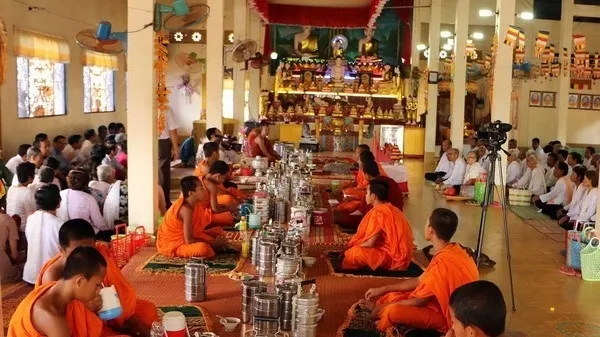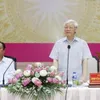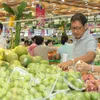Chol Chnam Thmay greetings delivered to Khmer people

The Party Committee, People’s Council, People’s Committee and the Vietnam Fatherland Front Committee in the Mekong Delta province of Bac Lieu on April 13-14 visited and delivered greetings to local Khmer monks, nuns and people on the occasion of their New Year Festival - Chol Chnam Thmay.
During the visits, the local leaders affirmed that the Party and State always pay due attention to carrying out preferential policies for the ethnic minority groups, including Khmer people, to improve their livelihoods.
The leaders hoped that Khmer dignitaries, officials and people to continue their efforts to maintain solidarity, proactively participate in social security programmes and work to escape poverty.
Representatives from local Khmer pagodas expressed their delights at the Party and State’s interest in the Khmer people and pledged to direct Khmer Buddhist followers to abide by the Party’s policies and the State’s regulations.
These days, Khmer people in southern region, especially Vinh Long, Kien Giang and Tra Vinh provinces, have been eager to welcome their traditional New Year festival as their livelihoods have been improved thanks to an array of support pogrammes and projects from the Party, State and local authorities. In addition, Khmer families have been encouraged to preserve and promote their cultural characteristics via Khmer sport festivals, food festivals and exhibitions.
Chol Chnam Thmay, which falls on April 14-16, is one of the most important festivals for Khmer people. It usually lasts three days and is celebrated mostly in pagodas.





